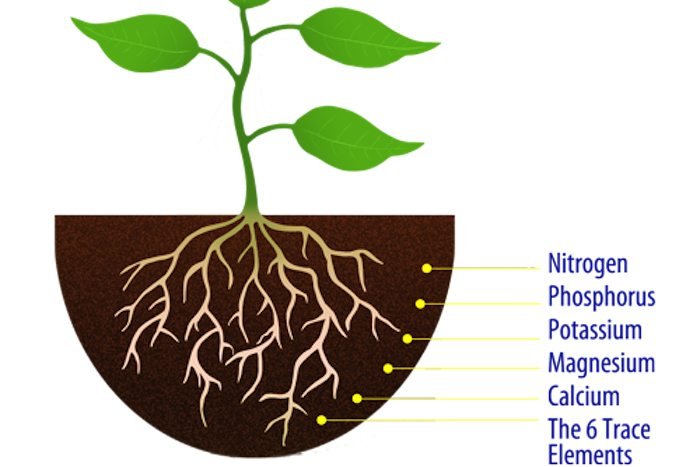Dynamic Accumulators: Mother Nature’s Free Fertilizer
Dynamic Accumulators are those species of plants which possess comparatively high levels of specific agriculturally-beneficial nutrients in their foliage and/or roots.
Plants that are Dynamic Accumulators include common garden crops as well as many wild plant species which when found in gardens are typically considered common weeds. So far, 344 different dynamic accumulator plants have been identified.
Dynamic Accumulators can be harnessed & utilized as a low-cost, effective and biodiversity-friendly component of one’s permaculture/regenerative gardening toolbox: Mother Nature’s free fertilizer!
Dynamic accumulator plants can be used as nutrient catch crops & cover crops, mineral-rich “chop & drop” living mulches, and home-brewed liquid fertilizers to help increase the levels of key beneficial nutrients in your topsoil and improve overall soil health & fertility.
The term “dynamic” refers to the plants’ use of active transport, rather than normal diffusion, to transport a nutrient against the concentration gradient – in other words, to achieve a higher nutrient concentration in the plant than in the surrounding soil.
Although the ability of plants to concentrate various minerals has long been established/accepted in conventional agriculture (for example, nitrogen-fixing plants, crop rotation and the use of cover crops), the effectiveness of Dynamic Accumulator plants has until recently been mostly anecdotal and informal. However an increasing body of fresh research is proving the theory and practice of using dynamic accumulators to increase soil fertility and nutrient levels:
-
- First published in 2020 (and continually updated as new research is found), the USDA’s easy-to-navigate Dynamic Accumulator Database currently lists 344 plants/species that have been shown via peer-reviewed research to increase nutrient concentrations to levels which meet dynamic accumulator nutrient accumulation thresholds (>200% increase above average soil nutrient levels…).
-
- A 2021 study (by Cornell University in collaboration with Unadilla Community Farm) performed a 2-year field trial of 6 frequently-cited Dynamic Accumulator species (comfrey, dandelion, lambsquarters, red clover, redroot amaranth, and stinging nettle) and all species tested exceeded dynamic accumulator thresholds and significantly increased soil concentrations of a range of key beneficial nutrients including P, K, Ca, Co, Cu, Mg, Mn, Ni, S, and Zn.
The natural ecology of dynamic accumulators:
In nature, fertility comes from the vegetation and soil life, not from a bag of chemically-synthesized petrochemically-based fertilizer salts. Many plants excel at pulling nutrients from deep in the earth and siphoning them to the surface where other plants can use them.
In a typical vegetable and/or specialty-crop garden, harvesting will constantly remove nutrients, so this withdrawn fertility will have to be replaced with additions of nutrients such as mulch, compost, or fertilizer. But with the intelligent application of naturally-occurring nutrient-accumulating plants in the garden, the task of spreading fertilizer can dwindle to almost nothing:
Certain species draw specific nutrients from deep in the soil and concentrate them in their leaves. The long taproots of these plants dredge up important nutrients such as potassium, magnesium, calcium, sulfur, and others. As these plants lose their foliage in fall (or when chop-&-dropped into living mulch or brewed into liquid fertilizer), the nutrients build up in the topsoil. Such plants are obvious candidates for the ecological garden, since they keep nutrients cycling within the yard and reduce the need for purchased fertilizers.
Many of these plants are considered weeds. In nature’s more tolerant scheme, most weeds make their living in-the-wild as pioneer species: tough, sun-dependent, fast-growing, and short-lived. These early colonists invade bare or depleted soils, where one of their roles is to accumulate nutrients in their roots and leaves. Each fall, these plants die and rot, pumping a healthy load of minerals into the soil.
A surprising number of so-called weeds have edible greens, including dandelion, chicory, pigweed, lamb’s quarters, chickweed, sheep sorrel, and cleavers. Weeds are supremely multifunctional plants.They are the pioneers, covering, protecting, and fertilizing bare soil, preparing it for others. Many weeds are superb nutrient accumulators—in fact, that is often their primary role, pulling widely scattered nutrients from deep in the earth and concentrating them in the surface soil.That also explains why they are so nutritious: They accumulate minerals in their tissues.
Weeds can also tell the gardener about soil conditions. Some weeds, such as curly dock and horsetail, grow in ground too moist for most fruit trees. Eastern bracken and silvery cinquefoil point to soils that are acid, while white tampion and salad burnet reveal alkaline soil.
In addition to these uses, weeds furnish critical food and habitat at various times of the year for songbirds, gamebirds, and other wildlife. Insects that feed on abundant spring weeds afford crucial nourishment for hungry nesting birds, while weed seeds help carry many animals through lean winters.
Weeds have been our partners at least since the dawn of farming. Many weeds are semidomesticated, once-major food plants used by early humans, tried but found wanting as full-scale agricultural crops. Perhaps they had too much genetic variability or didn’t set seed regularly. Thus, they fell by the wayside quite literally— yet were so well adapted to our landscapes that they have followed us ever since. Other weeds coevolved with humans because they thrive in the disturbed or cultivated soil at our settlements. Wanted or not, they have lurked at the edges of our culture since culture began.
Ecological gardeners turn the features of pioneer plants to advantage, letting them draw nutrients from deep in the earth to create fertile, balanced soil. As the soil improves, nutrients will begin to recycle from leaf to soil and back again. No longer will deep roots be required to tug scarce nutrients from the depths. The accumulator plants will then be redundant, and will begin a natural decline that the gardener can accelerate by pulling them up and replacing them with other varieties.
How to utilize dynamic accumulators:
-
- * grow as a full-season cover crop (& let their foliage return to the soil at end of season)
- * use as a “chop-&-drop” living mulch
- * harvest dynamic accumulator plants to use as inputs for brewing liquid fertilizers & compost teas
Dynamic Accumulators for common agricultural minerals:
Following is a list of the # of dynamic accumulator plant species (currently listed in USDA database) for a range of agriculturally-important minerals, along with a sampling of dynamic accumulator plants for each mineral:
N Nitrogen (9 species of dynamic accumulators including stinging nettle, dill, peas & cowpeas)
P Phosphorus (34 species including lambs quarters, garden cress, nasturtium)
K Potassium (57)
Al Aluminum (11)
B Boron (12)
Ca Calcium (91)
Cl Chlorine (10)
Co Cobalt (20)
Cu Copper (18)
Fe Iron (80)
I Iodine (3)
Mg Magnesium (68)
Mn Manganese (31)
Mo Molybdenum (9)
Na Sodium (33)
Ni Nickel (7)
S Sulfur (20)
Se Selenium (11)
Si Lathanum (18)
Zn Zinc (35)
Learn more:
- * Regenerative Agriculture Primer
- * Our Landraces, Local Ecotypes & EcoRegions of Provenance Primer has more info on how using dynamic accumulators & other polycultures in your garden/grow can help contribute to conserving, protecting & regenerating genetic biodiversity
Citations / Info-Sources
New Findings Further the Study of Dynamic Accumulators, Tyler & Zarro, Cornell University College of Agriculture & Life Sciences Small Farms Program, accessed from https://smallfarms.cornell.edu/2022/04/new-findings-further-the-study-of-dynamic-accumulators/,April 4 2022, Ithaca NY
Breaking Ground With Dynamic Accumulators, Unadilla Community Farm, Permaculture Research Institute’s Permaculture News, https://www.permaculturenews.org/2020/03/30/breaking-ground-with-dynamic-accumulators/, March 30 2020, The Channon NSW Australia
The Facts about Dynamic Accumulators, Kitsteiner, Permaculture Research Institute’s Permaculture News, accessed from https://www.permaculturenews.org/2015/04/10/the-facts-about-dynamic-accumulators/ , April 10 2015, The Channon NSW Australia
Gaia’s Garden : A Guide To Home-Scale Permaculture, Toby Hemenway, Chelsea Green Pub. Co., 2001, White River Junction Vermont
A Dynamic Accumulator Database And Field Trials For Six Promising Species, Tyler & Zarro, Northeast Sustainable Agriculture Research and Education (SARE), accessed from https://projects.sare.org/wp-content/uploads/A-dynamic-accumulator-database-and-field-trials-for-six-promising-species.pdf, December 2021, South Burlington Vermont
Dynamic Accumulator Database and USDA Analysis – Dynamic Accumulator Thresholds spreadsheet tab, Tyler & Zarro, Unadailla Community Farm and Northeast Sustainable Agriculture Research and Education (SARE), accessed from https://docs.google.com/spreadsheets/d/19S3wsjXU6VPzmbklZLVxKt6DCyZIPjCYw6zRrVg7M4Y/edit?usp=sharing, updated January 19 2023, South Burlington Vermont
Ecological Restoration: Principles, Values and Structure of an Emerging Profession, Clewell & Aronson, Society for Ecological Restoration International & Island Press, 2007, Washington DC
Cite this page as: Dynamic Accumulators: Mother Nature’s Free Fertilizer, by Motor City Seeds team, accessed from https://motorcityseeds.org/dynamic-accumulators, June 7 2023, Detroit Michigan




